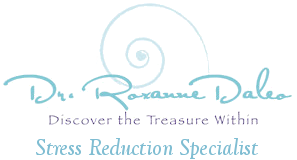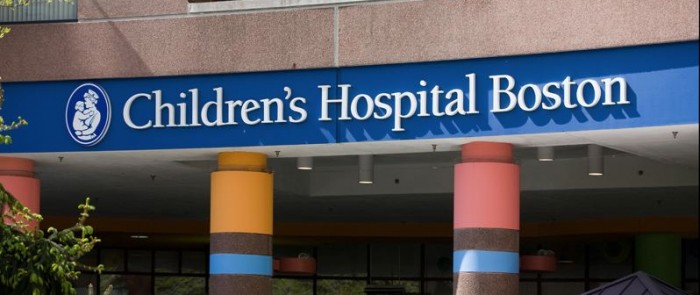Boston Children’s Hospital article in Children’s Today:
Thirty Years Later-Happy Anniversary
by Dr. Roxanne Daleo
“Hi, Dr. Roxanne?” the voice on the phone said. “This is Chris…Christine Berl.”
“Chris!” I exclaimed. I flashed back to the first time I met her. It had been many
years, yet I could see her vividly in my mind; a sweet, fragile girl clinging to hope by
a thread.
“Can you believe it?” she asked. “This year will be my 30th anniversary since my
bone marrow transplant!”
Christine was just 13 years old when she came to Boston Children’s Hospital, where I
worked as a Child Life Specialist. She knew she faced a serious challenge with
months – maybe years – of recovery.
If Christine survived, she’d be a medical miracle. My job was to help her deal with
the pain, the stress and the emotional roller coaster she was about to ride.
Those were tough months, but Christine had a strong will and love of life, she had an
unshakable confidence in her doctor. Plus the loving support of her family who held the same belief that she held for herself.
And here we were, 30 years later. I was on the phone with the miracle I’d prayed for. Christine shared with me some of the thoughts her 13-year-old self couldn’t.
First of all, after I was diagnosed with Aplastic Anemia and given 3 to 6 months to live, I immediately told myself, “I cannot die.” I never saw myself dying. I always believed I would survive.
Then, when Roxanne – light, laughter, paint, joy and roses – came into my life, I was given an enormous gift of being taught how to visualize and breathe as a way to deal with the pain. I also needed a way to cope with being confined to the tiny room, while dealing with all the other difficulties associated with undergoing the bone-marrow transplant.
Christine illustrates our potential within to awaken our inner energies. With mind/body strategies (self-regulation, meditation and guided imagery, etc.) we can access our inner self- our greatest source of healing.
I met Christine in 1982, when I was assigned to her as Child Life Specialist. I was still a doctoral student back then and research assistant to mind/body medicine pioneer Dr. Joan Borysenko. My mentors were noted Harvard cardiologist, Herbert Benson, MD, author of The Relaxation Response, and Dr. Jon Kabat-Zinn, founder of the UMass Mindfulness-Based Pain Reduction Program. I was implementing the techniques and groundbreaking research in psychoneuroimmunology which had direct relevance to the treatment and outcomes of the children in my care.
Opening children’s minds to the power within them became my guiding principle. Using the art of meditation under Dr. Benson’s guidance, I realized how important imagination is in relaxation therapy. He was using the language of imagination for adults and I adapted his principles to the language of imagination for children.
Psychoneuroimmunology explores the effect of emotions, thoughts, mental images and beliefs on immune function- to either inhibit or promote healing.
The research showed that we reach a powerful “choice point” in the midst of a medical crisis. It’s not so much about the disease itself, as about our response to it. As we spoke on the phone, she shared the image that she clung to all those years ago.
I am healthy – I look like myself again but even better – I have all my hair, I am happy and laughing. I am at the ocean, walking on a beautiful, white-sand beach. Then I see myself swimming in warm water. I swim underwater for a long time, but don’t run out of breath. After a while, when I am ready, I come up to the surface of the water and breathe in the salt air and peacefully look up at the sun and think, “Thank you, God, for saving my life, and letting me swim and be in the sun again.” My healthy new body feels light and relaxed as I glide through the water.
I had no idea, until now, 30 years later, how much I used this image to help me cope. I thought about it all the time. It was the one thing that brought me comfort in the midst of all the physical suffering.
Christine’s experience shows how our thoughts affect our emotions and our health. This approach was unusual then. But current practices in behavioral medicine take into account our beliefs for the prevention and treatment of disease.
Albert Schwitzer, MD taught his medical students: “There is a doctor inside each patient, they come to us not knowing this truth, we are at our best when we give the doctor within a chance to go to work.”
Deep healing is a conscious activity. Video gaming and distraction tactics for children do not effect the healing process in the manner of skills in conscious relaxation such as guided imagery. These life skills are necessary to access the inner most self-our greatest source of healing.
No one in the medical world expected Chris to live more than a few months. But she went on to finish high school, attend college and earn a teaching certificate and – perhaps most remarkable of all – to give birth to three beautiful children. Her success is a testament to the dedication of her doctor and the Boston Children’s Hospital staff, and to the power she accessed within her own beautiful self.

